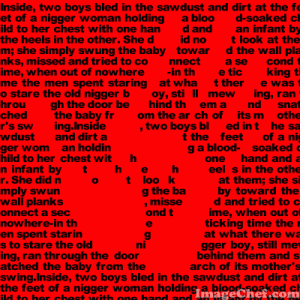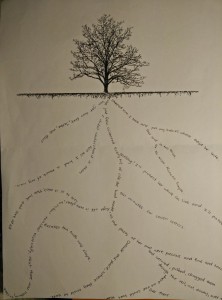The most pivotal point of the story Beloved by Toni Morrison was, when Paul D arrived at 124. At this moment I knew his role throughout this piece is vital because the flashback begin instantly. Creating; and setting the tone for the development of the story. Paul D character came like a storm from the pass, as Sethe try her hardest to patch up her pass nightmares from sweet home to move forward with her freedom. But this storm was a necessity for Sethe character to release all her pass hate, and mishaps so she can move forward with her life. On the other hand, Paul D was charming and easily likable; which made Sethe worry about how many women he had throughout his travel before arriving at 124. Who’s Paul D and how can help at 124; did Paul D start the story?
After his freedom he was happy to journey and enjoy life a little; then to find somewhere with someone that he knew; 124 was the place to be. Paul D has change for better; at this point he understand his life have a value, “Young girls sidled up to him to confess or describe how well-dressed the visitations were that had followed them straight from their dreams”. If Paul D, wasn’t gifted my comprehension is vague, he knew what to say because the women love him to death. He’s kind and sympathetic and for that Paul D is well liked “Strong women and wise saw him and told him things they only told each other: that way past the Change of Life, desire in them had suddenly become enormous, greedy, more savage than when they were fifteen, and that it embarrassed them and made them sad; that secretly they longed to die–to be quit of it–that sleep was more precious to them than any waking day”. Paul D surely understood how to take care of ladies really well. His charisma was next to none, in comparison to his other brothers throughout the story. Paul D was always like by Sethe but she grew very close to Halle primarily because, he respect and cared for his mom. For five years every Sabbath he, Halle slave for his mom freedom; Halle had sympathy and Sethe love that. With Halle, out the picture, Paul D made it his duty to find Sethe, at 124.
When Paul D arrives, Paul D character granted Sethe the mental freedom. She instantly wanted Denver to meet and know Paul D. Paul D is the only character besides Halle (Sethe former husband) that Sethe will ever trust and share any pass experience with. Sethe was hurt and lonesome before his presence. However, Sethe compassion for her pass life at sweet home play an essential role for the character she has become at 124; with the presence of Paul D, she become a woman of the house, like one whom treats her husband well and ensure a proper meal is fix upon his arrival for supper; “As she raised up from the heat she felt Paul D behind her and his hands under her breasts. She straightened up and knew, but could not feel, that his cheek was pressing into the branches of her chokecherry tree”. Paul D was one of a kind, he love Sethe for the history they share. Even though he rubbed his cheek on Sethe back her feeling in that area was gone due to the constant beating in the same region, Paul D felt the pain Sethe felt and sympathize with her, by sharing the same bed, love making without removing clothing; why wait: “the fact that Paul D had come out of “that other one” into her bed was better too; and the notion of a future with him, or for that matter without him, was beginning to stroke her mind. As for Denver, the job Sethe had of keeping her from the past that was still waiting for her was all that mattered”. Paul D presence became a feeling of hope, love and unity for Sethe; yet somewhat confused due to the fact that she cannot believe how he found her after so many years and miles of separation.
As Sethe reflects on her pass life and the constant uncontrollable changes: “She knew Paul D was adding something to her life–something she wanted to count on but was scared to. Now he had added more: new pictures and old rememories that broke her heart. Into the empty space of not knowing about Halle—a space sometimes colored with righteous resentment at what could have been his cowardice, or stupidity or bad luck–that empty place of no definite news was filled now with a brand-new sorrow and who could tell how many more on the way. Years ago–when 124 was alive–she had women friends, men friends from all around to share grief with. Then there was no one…” Paul D enables Sethe to reevaluate herself and understand, where she is has an individual. This expresses a lot because Sethe had withdrawn herself from the community like Miss Emily Grierson, the Rose for Emily by William Faulkner whereas Emily stood as a symbol to the community when she died everyone throughout her town was eager to dig through her house because they wanted to know what was in Miss Emily Grierson house. At the end of the day Miss Grierson was hurt and she died very unhappy because she lost what was important to her; her father. Paul D arrival gave Sethe that closure that Emily Grierson needed but no notice throughout the community.
All in all, Paul D role nest a burden from a wreck soul. Sethe was at a point of destruction and his character presence enables Sethe to coop. Paul D entry is the story, he connected characters and most of all the community to 124 due to his friendly personality. It was important that Paul D arrive because what story would have been told, how would Sethe rest mentally or would the story be the same?





